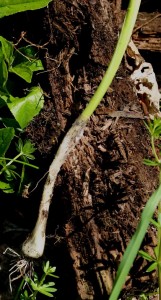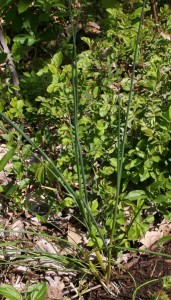 Wild onion – genus Allium
Wild onion – genus Allium
Wild onion
The wild onion is a perennial herb that is comprised of a large genus. The one feature all wild onions share is their very distinctive odor and flavor – they all have a mild to strong onion to garlic odor and flavor. The very poisonous death camas can physically look like a wild onion BUT DOES NOT smell or taste like an onion. If you encounter one of these stay away!!
Common names:
Canada onion, wild garlic, meadow garlic, and Canadian garlic, nodding onion
Description:
The leaves are slender and can be flat to cylindrical. The flowers are specific to the species you encounter but generally are on central leafless stalks and are globe to umbrella shaped. The bulbs are generally small.
Location:
One variety or another can be located somewhere in North America. Just remember that ONLY IF IT SMELLS LIKE ONION you can try it. Wild onions can be found in woodlots, forest clearings, along roads/train tracks and grasslands
Season:
The plants bloom from April through June, however, there is no real season to wild onions. Leaves may taste fresher and be tender early in the season. Bulbs will grow larger into the autumn.
Edible:
Leaves and bulbs which mean all parts of the plant are edible. Green leaves can be added to soups or cooked dishes to add some onion/garlic flavor. Bulbs, although small can be used as you would use grocery store onions.
H arvesting:
arvesting:
It is best to use a tool to loosen the soil around the plants prior to pulling. Just trying to pull on the leaves usually leads to the plants breaking at ground level. Frankly, any tool will work – everything from a stick to a shovel.
Just like their domestic relatives, wild onions can be kept in a refrigerator for several days. Both leaves and bulbs can be eaten fresh or they can be dried and if kept in a dry place will keep for months. They can also be chopped and frozen
Notes of interest:
Native Americans and early settlers used wild onions for food and medicinal purposes. Onions are said to be high in Vitamin C, phosphorus and iron. Herbalists use onion and garlic for immune system boosters and are reported to lower blood pressure and cholesterol
Back to edible plants